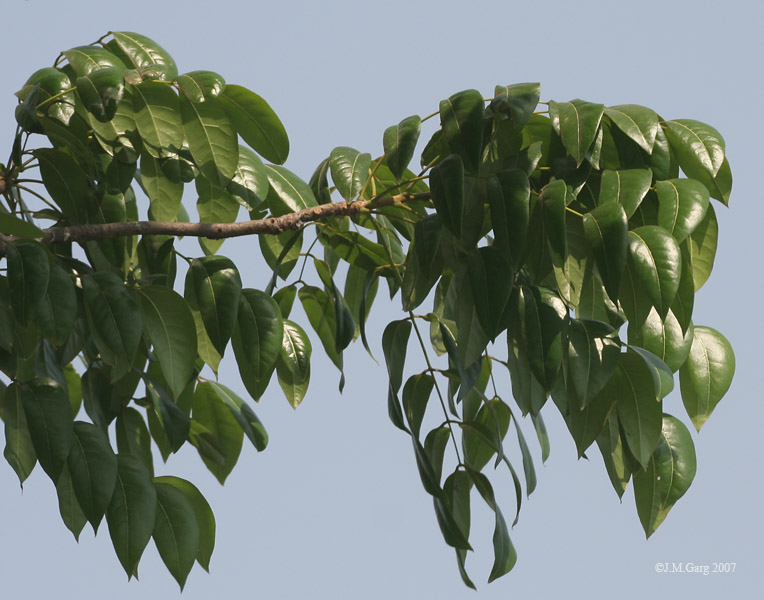
West Indies Mahogany: Nutrition
The mahogany tree, like all green plants, is a phototroph; it
produces its own food through photosynthesis. (Check out these other
cool organisms that gain nutrition by photosynthesis:
Sweet Orange,
English Daisy and
Dandelion.)This process occurs in two
steps called the light dependent and light independent reactions.

The light dependent reactions occur first when energy from the sun is collected via the leaves and used to make adenosine triphosphate (ATP). ATP, along with other molecules made during the light dependent reactions, is then used as an energy source to produce carbohydrates that the tree can use for food. This process makes up the light independent reactions. Water and carbon dioxide are necessary for the tree's survival, specifically to photosynthesize. The general equation used to represent photosynthesis is as follows:
Click
here to learn more about photosynthesis.
Structure of a leaf
Legend: 1) cuticle 2) upper epidermis 3) palisade mesophyll 4) spongy mesophyll 5) lower epidermis 6) stoma 7) guard cells 8) xylem 9) phloem 10) vascular bundle
So we know how plants make their food, but how do they distribute it to the top of the trees, where it can be utilized by the leaves? Is it by pressure in their roots? By capillary action?
It's one of those questions that had botanists scratching their heads. The answer can be explained by two very important plant structures: Xylem and Phloem.
1. sieve tube members, where nutrients are transported
2. companion cells, which take over the metabolism for the sieve tube members
3. parenchyma cells, which are used for storage and support.
- The nutrients from photosynthesis travel from a high solute concentration (leaves) to a low solute concentration (rest of tree). In order to keep the system moving nutrients must be continually added to already high concentrations of solute. This requires active transport by companion cells to move stored sugars from parenchyma cells to the sieve tube members.
- All this is a lot to remember, but if you just know that Xylem flows up and transfers water, while Phloem flow down and transports nutrients, you'll have a few facts to quiz your friends on!

